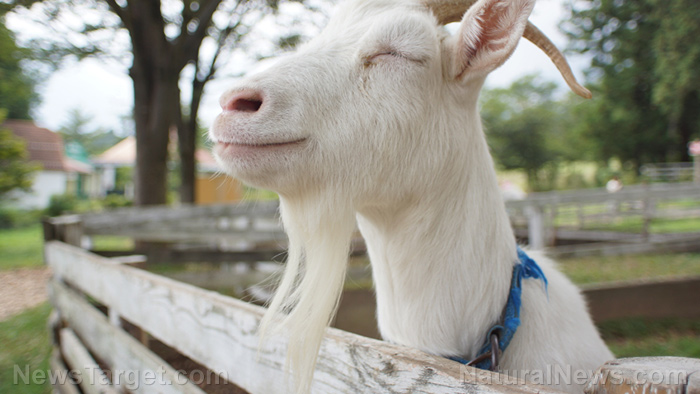Zoos for extinct animals could become a reality in the near future
04/25/2018 / By David Williams

Many animal species have already gone extinct, which means that there are none like them out in the world anymore. But traces of them could still exist, particularly in fossils and DNA remains, making it possible to bring them back to life, so to speak, and enable people to see them in the flesh at some point in the future.
This is all based on concepts that relate to the science of animal cloning, and how it can be used to “resurrect” extinct animals by using present-day technology. It may be a long shot, but some signs point to it being a distinct possibility. In fact, many scientists and other experts believe truly believe that it could happen.
Just the idea of being able to clone certain animals, even those which are still around, would be enough to fuel excitement in some people. But what would be exciting is if scientists somehow made it possible for ordinary people to see supposedly extinct animals up close and personal in actual zoos. As you might have guessed, that’s a thing that’s already in the works. In one study, the researchers are looking at the possibility of making it happen by 2070.
One version of this possibility involves the use of extinct animal DNA, although the selection is not as extensive as you might think. For instance, dinosaur DNA is pretty much useless, as DNA samples are said to be good for just a million years, and most dinosaurs have been gone for much longer than that. And then there are certain animals, such as the wooly mammoth, whose DNA may be available, but will be out of place in the modern world and wouldn’t be able to breed in its actual natural habitat.
So as an alternative, researchers have considered going with animal species that can thrive in current climates and only went extinct fairly recently, such as the passenger pigeon. To resurrect them now through the use of their DNA samples, scientists would need to map the entire passenger pigeon genome, and then mutate the genome of the common pigeon so that it becomes more similar to that of the passenger pigeon. And just like that, they will have created clones of an extinct animal species. (Related: Stunning scientific breakthrough allows DNA “rebirth” of animals from long-dead, partially decomposed tissue samples.)
If the method of cloning long-extinct animals and bringing them back to life to be showcased in places such as zoos today is so simple, why hasn’t it been done yet? Online reports indicate that it may be due more to financial and political reasons, rather than scientific. Indeed, according to Xiuchun (Cindy) Tian, an expert who is studying ways to reactivate nucleus-based DNA through cloning, science has come a long way since the days of Dolly the sheep, the first cloned animal.
In Tian’s view, it would take about 10 years for extinct animal zoos to exist, if there were “sufficient political will and funding” to work on them. But even if the government, as well as the private sector, backed the idea wholeheartedly, there would still be issues with mortality rates, which for cloned animals are initially very high, which introduces an ethical aspect to it.
In any case, it’s abundantly clear that the science to make it all happen is already available to some extent and just needs to be tweaked. However, there are bigger issues that need to be tackled first if a zoo that is filled with animals that went extinct a long time ago is to exist. One thing’s for sure; it would be a stunning spectacle when it finally comes to life.
Read more science news at Science.news.
Sources include:
Tagged Under: Animal cloning, animals, clones, Cloning, Dinosaurs, extinct animals, extinct species, future science, Tourism, weird science, zoo




















